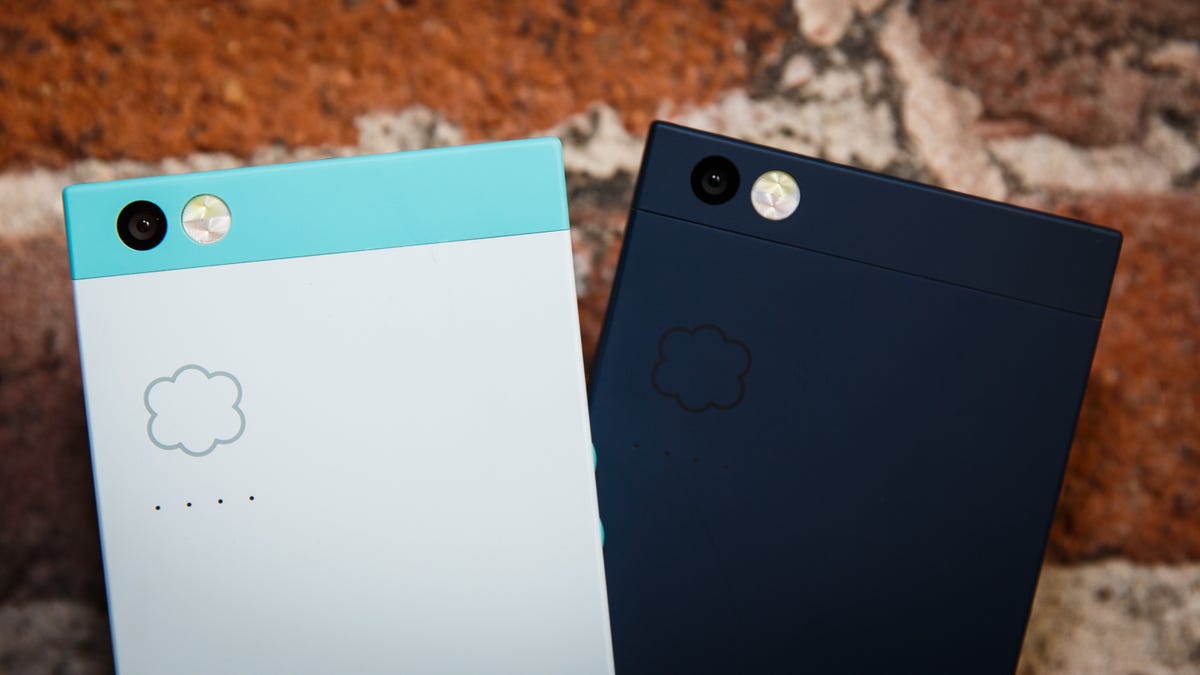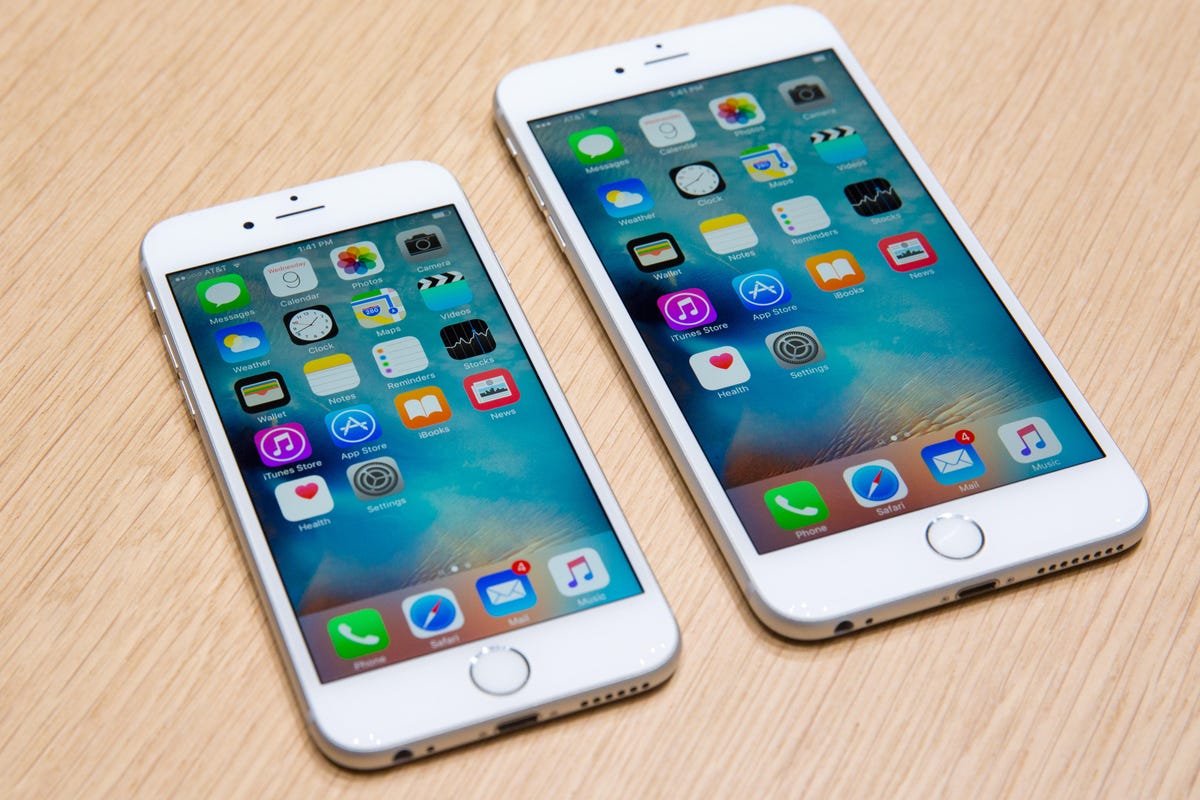 Enlarge Image
Enlarge ImageJosh Miller/CNET
Apple’s new iPhone 6S and 6S Plus will emerge from their darkened boxes, blinking, into a US marketplace that’s dramatically changed from the one that iPhone has known before.
It’s a vast and blossoming landscape of consumer choice where carriers are losing their stranglehold on rigid contracts, and even on the selection of phones that people can buy. It’s a reality that Apple itself is helping create.
Customers could already purchase the iPhone from Apple’s website, but the company’s new iPhone Upgrade Program seizes even more power for Apple over wireless carriers like AT&T, T-Mobile, Sprint and Verizon. Buyers directly pay the wildly popular electronics-maker around $30 per month for two years (the exact price depends on your model) and can get a new iPhone every year.
Related stories
- Hot-button issue: iPhone 6S hints at an end to the home button
- Hands-on with the iPhone 6
- 4 Live Photos alternatives that work with nearly any phone
And that’s the silent revolution here. Apple handles the sale itself; no carrier involvement allowed.
Cutting out the middleman, the carriers, is a big deal in the US, where wireless providers control and distribute the vast majority of the nation’s cell phones. By doing so, companies like Apple and a whole sea of other players can sell a much wider variety of phones online — directly to consumers — and for less than they might cost with the carrier.
While carrier influence won’t evaporate any time soon — after all, they still create the networks that supply data and voice services — we are starting to see a heady proliferation of no-contract, non-carrier-specific smartphones from both established makers and new entrants. It’s a steadily strengthening countercurrent that Apple’s Upgrade Program will help push mainstream. (Archrival Samsung may too follow suit.)
More phones direct-to-you
Apple is the most high-profile phone brand steering into direct-to-consumer waters, but this is hardly uncharted territory. Motorola continues to do well selling phones you can customize yourself through its Moto Maker website. (Unlike many phones sold this way, the Moto X Pure Edition and Moto G work with all the major US carriers, a huge win.) Google, too, has made most phones in its Nexus family available through an online store, and is expected to carry that forward when introducing its newest Nexus phones on September 29.
Sleek-but-cheap: Alcatel OneTouch Idol 3 (pictures)






+6 more
Add to that Huawei, ZTE and Alcatel, whose online wares include much more interesting devices than the lower-end ones currently floating along in carrier portfolios now. These direct-to-consumer options include the recommended Alcatel OneTouch Idol 3 , ZTE Axon Pro flagship and stylish Huawei P8 Lite .
Even brand-new phone-makers, like Kickstarter campaigns Ubik, with its crowdsourced design, and Nexbit , with its phone that uses online storage to make more space for photos and apps, find that the time is ripe for entering the famously impenetrable US market with little more than word-of-mouth campaigns.
Cheaper prices, greater trust
Several conditions have prepared the ground for Apple and its competitive cohort to reach out to consumers on their own. Parts and manufacturing prices have come down, making it possible for phone-makers to build and sell phones for less — say, an almost-flagship for $400 (like the OnePlus Two , and Motorola Moto X Pure Edition with its 21-megapixel camera) instead of for $650. Maybe that phone won’t have every software add-on, but it might still include a metal build, a high-performing camera, a fingerprint reader and the same or similar processor as today’s most premium handsets.
Direct-to-consumer brands can also lower prices by lowering overhead. If they don’t pay for expensive TV and magazine advertisements, they don’t have to recoup those costs with your purchase. Brands with lower overall expenditure can survive longer on smaller sales volumes.

 Enlarge Image
Enlarge ImageJosh Miller/CNET
There’s consumer demand as well. As the differences in high-end phones begins to blur from brand to brand (pretty much every high-end phone will look sleek, take good photos, and run quickly), bored buyers become thirsty for new handsets that take a gamble with design and niche features, like the Nextbit Robin’s cloud storage and security-centered Turing Phone .
Consumer trust in buying products online in also growing, even for the riskier type of crowdfunded Kickstarter and Indiegogo campaigns. The kind of transparent one-on-one relationship these brands can build puts a folksier face to an unknown name that can compel more than an inscrutable corporation that nevertheless has much mightier global familiarity.
Of all the contributing factors in the undeniable rise of the US’s direct-to-consumer tide, the most important is this: the erosion of two-year carrier contracts. Thanks to T-Mobile’s instigation, wireless providers now make it easier for customers buy a phone off-contract at a full retail price, or through a monthly installment plan. (Remember, not every phone will work with every network; off-contract doesn’t always mean “unlocked”.)
With cell service divorced from the phone purchase (and the customary two-year upgrade), buyers are more than ever seeing the phone more like a laptop or TV, as an electronic you buy outright and replace on your own schedule, whether that’s in 10 months or in three years.
A shift for Apple signals a shift for everyone
It doesn’t take a fangirl or fanboy to recognize Apple’s incredible impact on the smartphone industry with just two phone models a year. Its 40 percent US market share testifies to that, compared to all of Android’s many makers. (In contrast, Motorola, one of the more established direct-to-consumer outfits, has about three yearly phones and closer to 5 percent US share.)

 Enlarge Image
Enlarge ImageJames Martin/CNET
So when Apple commits to a trend, like it did finally with mobile payments, that decision has the power to tip the scales. Yet even as Apple’s involvement in a direct-to-consumer setup may support or even galvanize other brands to do the same, Apple’s tactics to keep the iPhone momentum going have only become more shrewd.
As similarities among high-end phone features and performance make the iPhone less unique overall, especially with the more incremental “S” series we see in odd-numbered years, Apple’s carrier-bypassing iPhone Upgrade leasing plan effectively locks fans into each yearly upgrade cycle — regardless of customers’ level of excitement over the phone at hand. By controlling its relationship with buyers month after month and year after year, Apple’s innovative payment protocol transforms the iPhone into more than just as a product; it becomes an ongoing phone-procuring service, too.
And just like that, the new iPhones that enter the world this month will help shape a dawning era where phone-makers become just as active in managing their relationship with you as the carriers are themselves. Possibly even more so.



